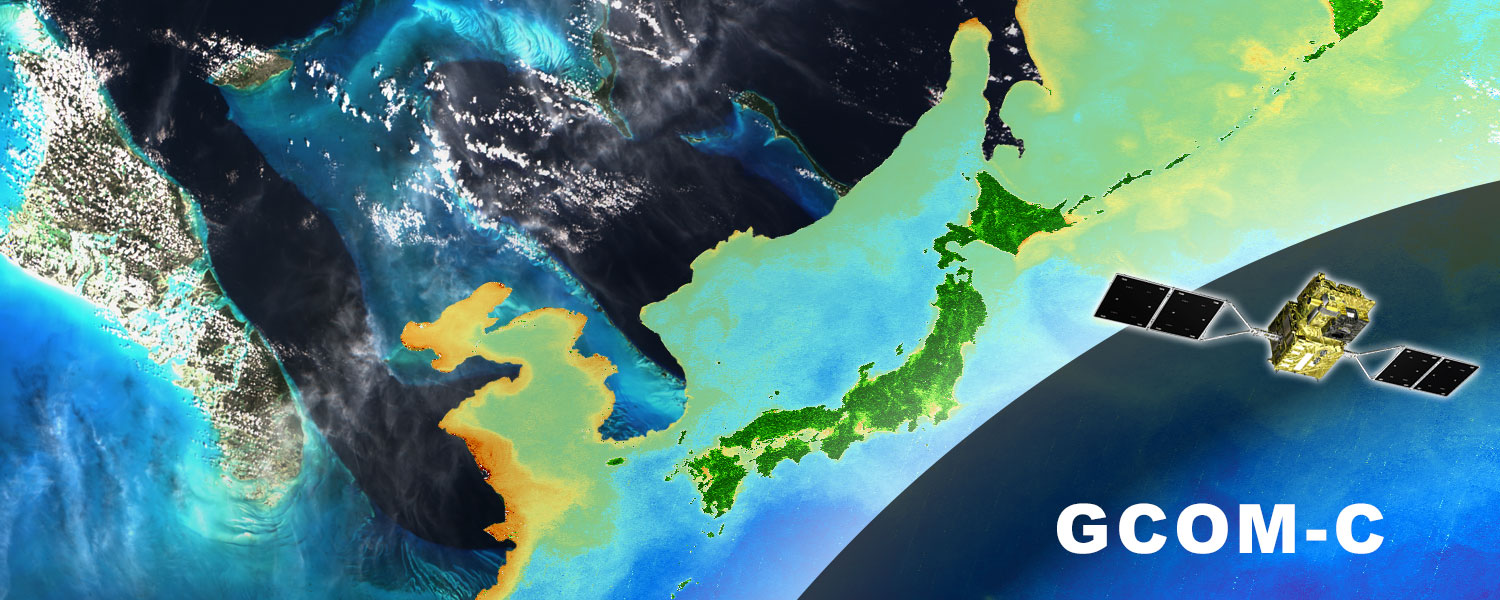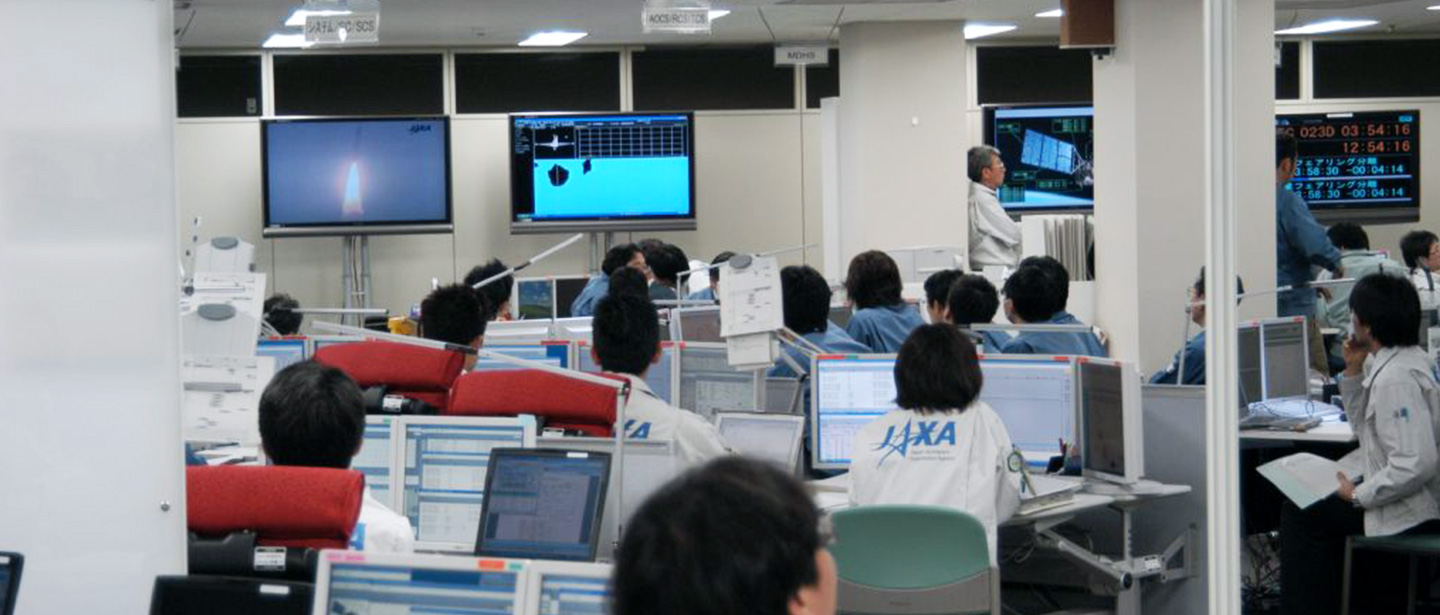
The Global Change Observation Mission (GCOM) is a JAXA’s mission to observe the Earth System’s essential variables such as surface temperature, water vapor, vegetation, snow and ice area, and so on. GCOM-C project is conducting the Earth science research, application research and calibration/ verification related to climate change using the Second generation GLobal Imager onboard earth observation satellite GCOM-C.
In the field of carbon cycle, it is expected that “capacity to absorb carbon dioxide by the ecosystem in the land area and the sea area” is clarified by observing the distribution of plants in the land area, the surface temperature, the distribution of phytoplankton in the sea area, the sea surface temperature and so on. In the field of radiation balance, it is expected that the parasol effect is clarified by observing the cryosphere such as sea ice, ice sheets and snow cover, and the characteristics of clouds and aerosols in the atmosphere. By clarifying these characteristics, it is expected that prediction accuracy of global warming can be improved.
In addition, this project is developing application methods and publishing the data observed by the Second generation GLobal Imager, since the data can be used for agriculture, fisheries, forest fire and air pollution monitoring, and so on.
Related main satellites and sensors
| Satellites | Main sensors | Observation period |
| Global Change Observation Mission -Climate “SHIKISAI” (GCOM-C) | Second generation GLobal Imager (SGLI) | 2017- (in operation) |
| Advanced Earth Observing Satellite “MIDORI-II” (ADEOS-II) | Global Imager (GLI) | 2002-2003 |
| Advanced Earth Observing Satellite “MIDORI” (ADEOS) | Ocean Color and Temperature Scanner (OCTS) | 1996-1997 |


















